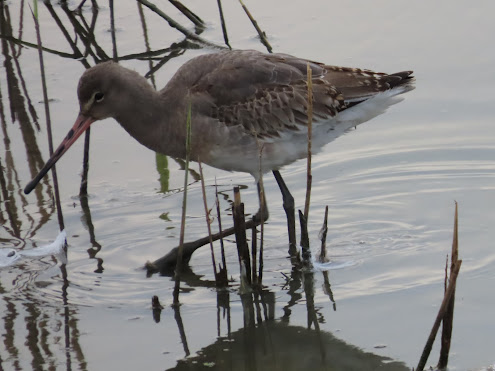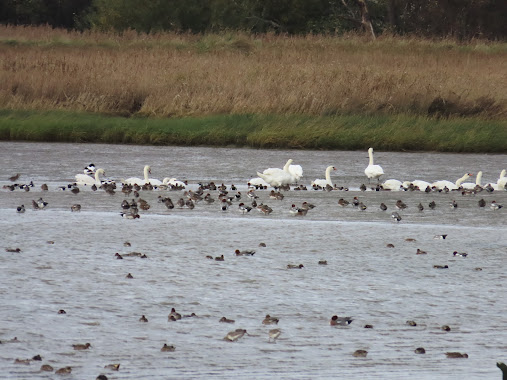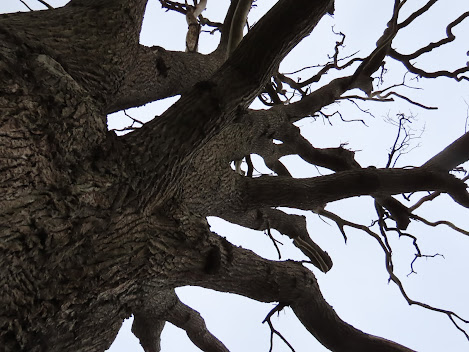What I love most of all about Winter, more than any month, is that it creates an aura of wilderness on the land, a kind of wildness embodied by the empty trees and frosty mornings. There is a haunting beauty to the season, again like no other, when even a duck pond becomes something wild. Summer feels so tame in comparison, so civilised, and that's what Winter means, the arrival of large numbers of birds from distant lands.
On a relatively mild winter's day, one of the last days of the year, I headed over to Minsmere to have a look for some of the birds that the cold has brought in. As with most winter's days it was fairly quiet with most of the birds sleeping or feeding in a lazy manner. Large numbers of water birds turn up at Minsmere for the winter, taking refuge on the wetland areas on the reserve, usually concentrated on the Scrape, and numbering in the thousands.
Birds of the day was a flock of eight BEWICK'S SWANS on South Scrape, newly arrived birds having flown in all the way from Russia. Like many other birds, these swans are having a hard time of it, and their population is declining. Always a fairly scarce bird on the Suffolk Coast, this bird is becoming much rarer now, with Minsmere being the main base for them. One of the problem with Bewick's Swans is that they are not rearing enough young on their breeding areas, and tellingly none of the eight birds today were juveniles. One of the swans had a neck ring, a way of tracking individual birds, but I couldn't see the number.
Often not the focal point of the reserve, as its fairly poor for birds, the sea can be fairly empty off Minsmere, but today it was actually quite a good place to see birds. The still calm weather allowed for some good views of certain maritime birds, mainly RED THROATED DIVER, with at least ten present close to the shore. Usually you see these birds miles off the beach, usually just a speck in the telescope as it undulates on the waves, but today they were easy to view. There were also a few GREAT CRESTED GREBE and CORMORANTS on the sea as well.
The Scrape was the main focus of waterbirds, with most of the commoner birds present. Slightly scarcer, just the one PINTAIL was present, a male on South Scrape. The Levels, a large area of wet grassland between Minsmere and Sizewell, has started to flood, with a large flock of LAPWING present. Hidden amongst the tussocky grass on the ground, they would take to the air when the odd MARSH HARRIER flew over, maybe a thousand put to flight, their rounded wings and tumbling flight a characteristic of this bird. Winter is always a poor time for WADERS at Minsmere, but a few birds were present. 20 DUNLIN were on East Scrape, whilst 19 AVOCET, 12 CURLEW and 2 TURNSTONE were on South Scrape, with 2 REDSHANK on the Levels. One further wetland bird, a GREAT WHITE EGRET was present flying around the Scrape often in the company of its smaller brethren, the LITTLE EGRET. Although common a few miles north at Dingle Marshes, it is still fairly scarce here, but will become more common, forced here through climate change.
Away from the waterbirds, there was a supporting cast of the smaller birds. Around the visitor centre bird feeders among the large numbers of TITS was a NUTHATCH, a bird that although common across the country is actually quite scarce on the Suffolk Coast. As usual the dunes held plenty of STONECHAT with six present, such an easy bird to see as they are often gracious enough to pose on a gorse bush for a view. And finally another iconic bird of Minsmere, and its huge reedbeds is the BEARDED TIT. The bird's characteristic metallic "pinging" call carries over the winter's silent reeds, and I was able to see two flying across the front of East Hide.






















































